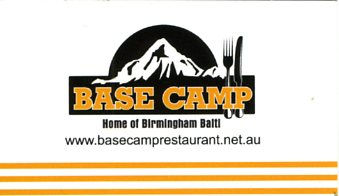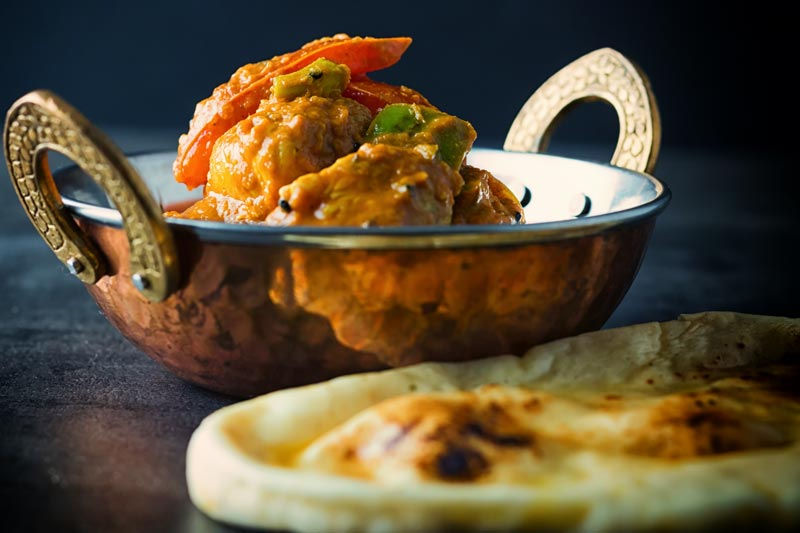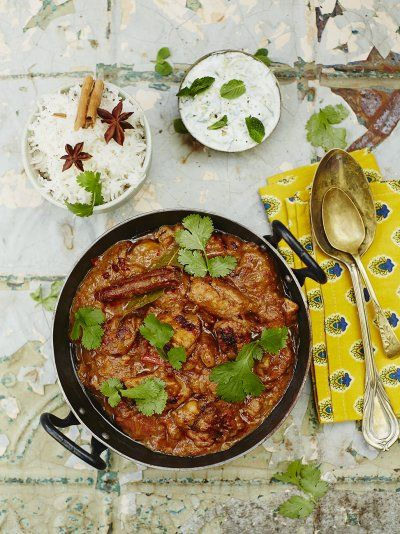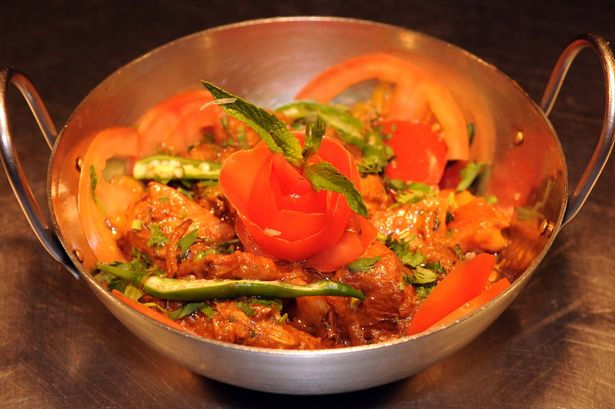Birmingham balti - an urban myth?
- rosemarydearman1
- Jul 14, 2019
- 5 min read

“a craze with no authentic origins which will slowly die as people’s tastes turn to more complex dishes.” Madhur Jaffrey
Yesterday we lost our electricity when a big tree fell on the power lines down the road. I have gas, and I could have reheated our soup from yesterday, but I would have had to do it in the semi-dark and we would have been eating by candlelight and in the cold. So after a discussion with some neighbours - we were checking on whether it was just us who had lost power or not - we all decided to go out for a curry.
And we decided on the local version of a Northcote Indian restaurant we had visited a while back, called Base Camp.

I remember it as being a little bit different from the normal Indian Restaurant because it served Nepalese dishes and also balti dishes - Birmingham balti dishes in fact. Which indeed it did - and we did have one of those, and two of the Nepalese ones, plus a tried and true chicken korma.
But this is not meant to be a restaurant review - well only incidentally. It's more about Birmingham balti. Because guess what - whilst Prosecco is struggling to get official EU recognition of its name, Birmingham balti now has official EU Protected Name Status - thanks to the Birmingham Balti Association, the British Government and a man named Andy Munro.
So what is Birmingham balti, and does it really deserve this recognition?
Briefly put - it's a kind of Indian stir-fry. To conform to the EU standard and to be able to use the name, it has to be:
- cooked in vegetable oil rather than ghee for a “cleaner” taste,
- cooked fast over a high gas flame in under 10 minutes,
- cooked using turmeric, methi (fenugreek) and garam masala (while each individual chef and restaurant may add their own preferred spices) plus fresh ginger and garlic puree,
- cooked in a thin pressed steel Balti, and
- served in the dish it has been cooked in (usually with fresh coriander and naan to be eaten with the fingers)." Andy Munro

The above pictured dish is therefore not authentic, because the dish it is cooked in is copper not pressed steel. Pressed steel is not stainless steel I think. Below is an 'authentic' dish and one you can apparently get from K-Mart, with a copper base for $2.25 - yes $2.25! I think they were in Aldi recently too - though not pressed steel.
If you really want to know how to cook an 'authentic' balti dish and also to see the kind of dish you should use, then watch the video from The Guardian called a square meal in the balti triangle. It's just over 5 minutes and worth a look.
So what is the story and what is/are the counter-story or stories? Why is Madhur Jaffrey so scathing? Birmingham - more or less in the middle of England has a very large Pakistani immigrant community. Back in the 1970s one Mohammed Arif, owner of the Adil Balti and Tandoori Restaurant, which still exists, decided to create a dish more in keeping with his British customers' tastes. He took the name of his 'fusion' dish from the balti - a traditional kind of cooking pot, whose name in the various Indian languages of the region, means bucket. I also saw a derivation claimed from the Portuguese 'balde' meaning the same thing, but this seems a bit wrong to me, as my understanding is that the Portuguese colonised the south-west of India, notably Goa, not the area that is now Pakistan or Kashmir.
Mohammed Arif, thought that his British customers would appreciate something lighter and healthier than traditional curries and so the balti was born - with the emphasis on the fast stir-fry nature of the dish and the use of vegetable oil rather than the heavier ghee for cooking. He and the other Birmingham fans of the style call it fusion cooking.
"The origins of Balti cooking are wide ranging and owe as much to China (with a slight resemblance to the spicy cooking of Szechuan) and Tibet, as well as to the ancestry of the Mirpuris, the tastes of the Moghul emperors, the aromatic spices of Kashmir, and the 'winter foods' of lands high in the mountains." Pat Chapman
That bit about its origins in India is why people like Madhur Jaffrey are so scathing about it. Because I believe there was a dish called balti ghosht, although it apparently bears little resemblance to the Birmingham balti. I have to say that after watching the video it seemed to me that the main thing was the speed at which it was cooked - very much like a stir-fry - and I can never do that tossing with the flames thing.

I tried to find a recipe for an authentic Birmingham balti, but most of those I found took much longer than 10 minutes to cook, not including the time to make the spice mixture. In England you can, of course, buy meal deals of balti dishes, and also balti spice mixtures and pastes. Not here as yet.
Jamie Oliver's recipe for Perfect chicken balti - (shown at left) is typical of the majority of the recipes I found. However, the Birmingham Balti Bowl Co. seemed to have rather more authentic recipes on its site.
As to the health thing - well maybe. The following statement is supposed to reinforce the health benefits, but I have to say that to me, the idea of ingesting iron traces from the pan is not particularly appealing! Nor is drinking half a pint of Guiness healthy surely?
"A scientific study purported to prove that eating a Birmingham balti was equivalent to drinking half a pint of Guinness in its health benefits because of the iron traces from the bowl. " Andy Munro"
And as I read and watched the video it was also apparent that another important thing about the Birmingham balti was that it should be eaten with naan which is used to scoop up portions of the dish. And the naan that traditionally accompanies this dish is a very large round one, which is shared between all at the table.
And what about our beef balti? Well it was very tasty, and it was brought to the table in the bowl it was cooked in I think. Well maybe, maybe not - you can't tell really can you? I don't think it was still sizzling. And tasty though it was I wasn't conscious of it being all that different in kind to the other delicious dishes we tasted. Also, like Jamie's it had quite a lot of sauce, and I somehow have the idea that a true balti dish should be dryer like this one.

The goat curry from Nepal was probably the standout dish, but the ambience was not great - well not in the half of the restaurant that we were in. The other half had white tablecloths and was further away from the door which leaked cold air. The service was a bit offhand and slow too. Not sure we shall go there again. Maybe.
















Comments